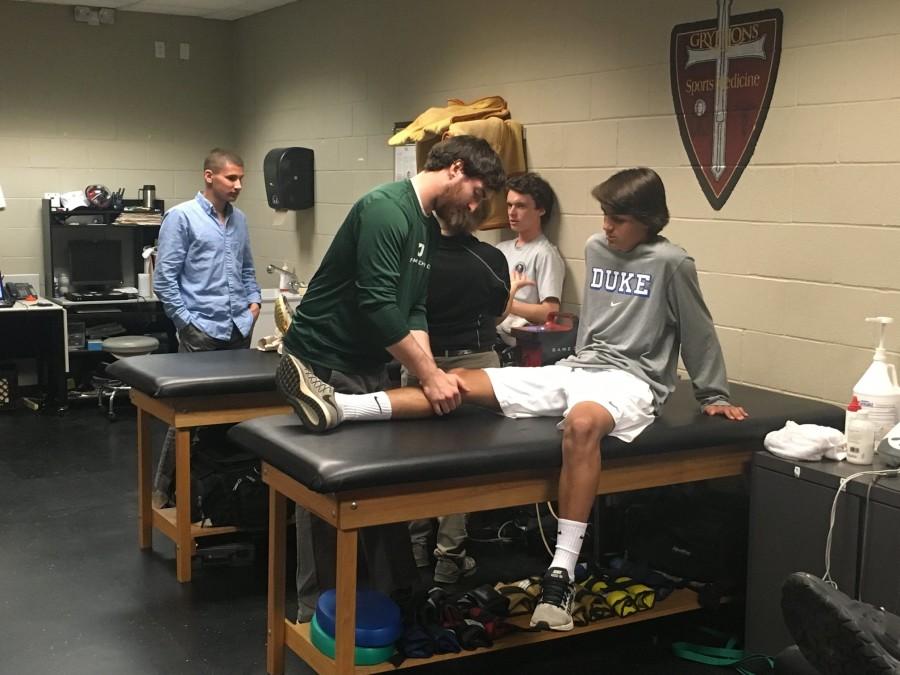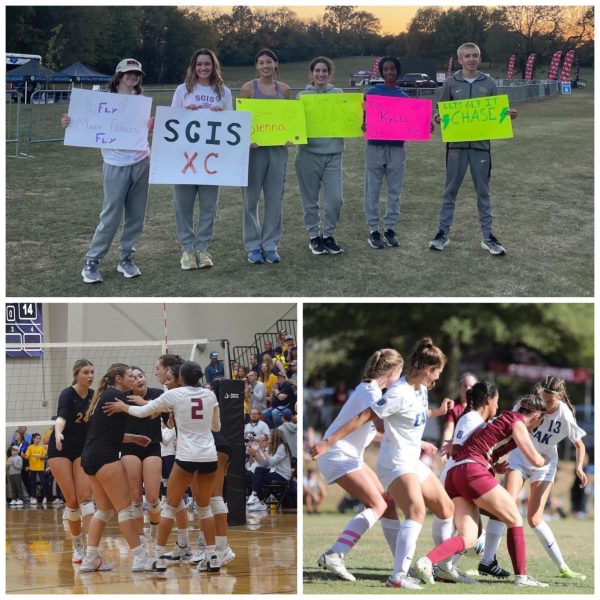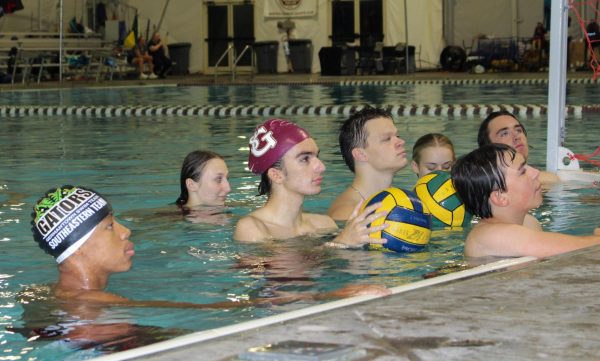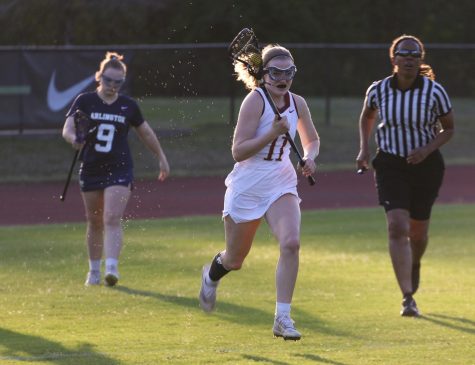Breaking records, breaking bones
Internal pressure drives players to injury
Photo: Carolyn Lane
Athletic Trainer Mr. Garrett Cole evaluates sophomore Lathan Spadafora’s knee. Spadafora was one of the dozens of students that visited the trainer last week.
Although senior Stephen Ogle has been playing tennis since he was eight years old, he will not be playing during his senior year.
As he side-shuffled to get a ball in a match earlier this year, Ogle rolled his ankle and broke his calcaneus bone, one of the main bones in the bottom of the foot, yet he continued to play. However, after nearly 40 minutes, he realized something was wrong and decided to get his foot checked out, and the next day, he showed up to school in a bright neon cast.
Ogle’s injury experience is common in the world of sports. According to a survey sent out to the entire Collierville campus, 88.5 percent of 132 respondents who play sports currently or have played them in the past have experienced a sports injury, though some injuries may not have been as major as Ogle’s broken bone.
Head athletic trainer Ms. Tina Cole was not surprised by this percentage. She believes that more athletic training and awareness can help prevent injuries.
“I think that there needs to be more education on proper form, especially in females,” Ms. Cole said. “We have a program called Fusionetics that can help us identify the higher risk athletes, which I hope Garrett [Clouse] and I will get started over the summer.”
Much like Ms. Cole, Athletic Director Tom Densford did not appear shocked to hear the 88.5 percent injury rate.
“I would say that even if you did get 100 percent response back [on the survey] the number might grow or stay the same. I don’t think it’s an alarming number,” Mr. Densford said. “They’re going to be injuries, but there’s a lot of that is how you learn to persevere.”
Sophomore Kate Seabrook started playing sports 13 years ago, and since then, she has experienced about 10 to 15 injuries. Her injuries have ranged from minor, such as jammed fingers and sprained ankles, to more major, like her broken foot.
When it comes to the minor injuries, senior Mac McGuffee has a tape-and-play policy.
“I think I put a lot of pressure on myself just to play through injuries, especially jammed fingers and stuff like that,” McGuffee said. “Just tape your fingers up and play.”
Playing through injuries can be dangerous, however. During senior Sydney Spadafora’s freshman year, she pulled a muscle in her leg and reaggravated the injury by attempting to play while it was healing.
“I pulled one muscle, then I kept playing on it, pulled another muscle in the same leg and kept making it worse,” Spadafora said. “I had to have a wrap for the state semifinals. It was really hard.”
Although Spadafora was able to play while injured, some students experience injuries that are too severe for them to play.
According to sophomore Carlos Rivera-Peraza, who broke his ankle during a soccer game earlier this season, not being able to play is the worst part of being injured.
“It sucks,” Rivera-Peraza said. “It’s really hard to watch [the game] because you know you can make a difference, but you’re not able to.”
Though being hurt is not something any athlete wants to experience, the injury is just as nerve-racking for coaches as it is for the players. Head football coach David Carter is filled with anxiety when players are hurt.
“I can’t stand it. I hate it. It scares me,” Coach Carter said. “After the scare, it’s the make-sure-everything’s-okay and that the-trainers-are-doing-what-they’re-supposed-to-do stage.”
According to Ms. Cole, around 60 St. George’s students receive treatment from the trainers every week. Though injuries from playing sports cannot be completely avoided, Ms. Cole believes that conditioning can play a significant role in preventing minor injuries.
“If you’re not properly conditioned and you continue to push yourself beyond your body’s limits, it will not end well,” Ms. Cole said.
Many athletes believe this extra push, which tests the body’s limit, is a result of
the pressure they put on themselves when it comes to performing at a high level.
81 percent of St. George’s athletes have experienced some form of internal pressure at one point during their athletic career, according to a survey sent to the Collierville Campus.
In fact, Spadafora’s internal pressure outweighs the pressure she feels from her teammates, parents, and coaches while playing.
“I always expect really good things for myself and to play to my highest expectations,” Spadafora said. “I never want to let myself down.”
While self-motivation can be the solution to problems academically, artistically and even athletically, athletes must understand their own bodies and where to draw the line.
“Don’t overextend yourself,” Rivera-Peraza said. “If you’re starting to feel pain, don’t play through it because you’re just going to hurt yourself.”











